Centaureas, including annual cornflowers and perennial knapweeds, have been grown in gardens for centuries. Originally prized as herbal remedies, they’re now a popular addition to cut flowers patches and borders, with their delicate, thistle-like flowers that are a magnet for bees, butterflies and other pollinating insects.
There are around 80 perennial species in cultivation, ranging from low-growing edgers to large specimen plants. All of these lovely plants offer a long season of interest, with the low-growing cornflowers starting to flower in early May and the taller knapweeds coming into flower from June onwards.
Often they re-bloom through to autumn, and several weeks before the flowers appear, jewel-like buds, which are sometimes silver or bronze, extend the season further.
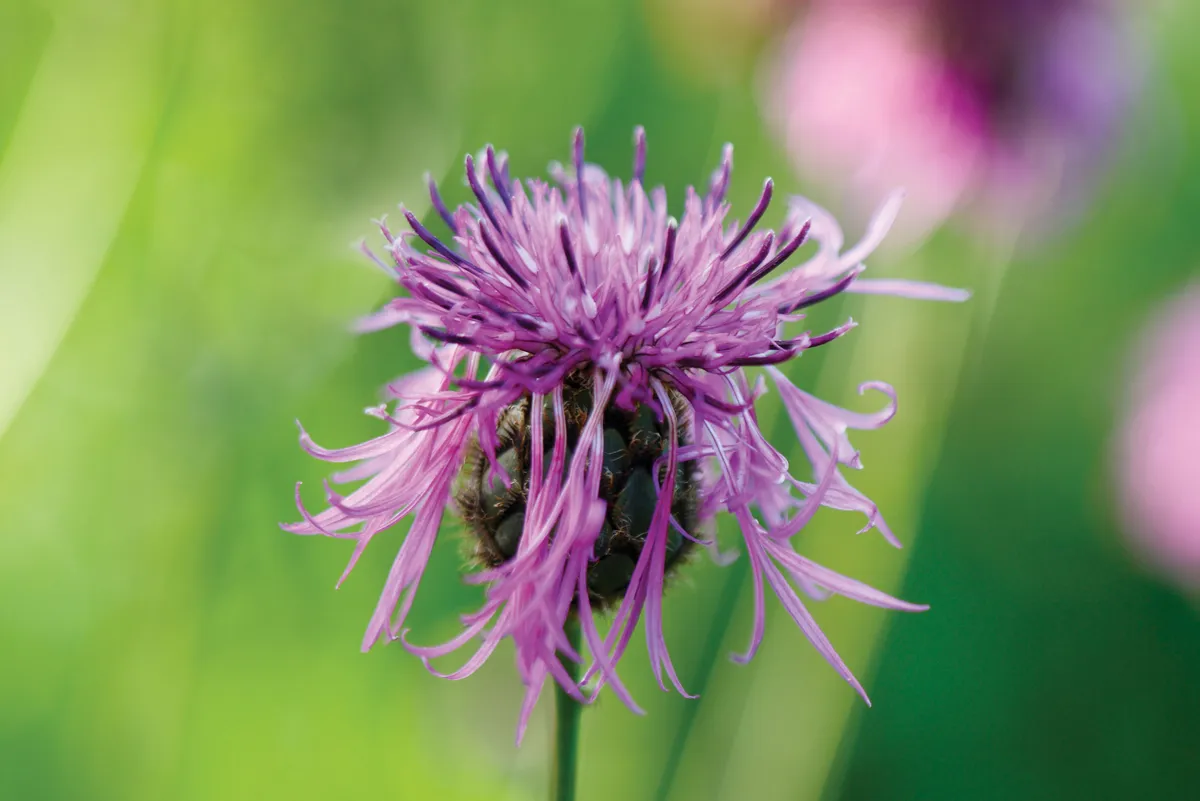
Perhaps, the most widely grown is Centaurea montana, sometimes known as mountain bluet. With deep-blue flowers from May onwards, gardeners tend to
either love or loathe it on account of its running and seeding habit.
With so much variety in size and colour of centaurea, these enchanting flowers will add months of colour to any garden.
How to grow centaurea
Where to grow centaurea
They grow well in full or partial shade, and they’re not fussy about soil type, thriving in sand, clay or stony soils. In the wild many grow on chalk but they do well on our mildly acid soil. Like most plants, they prefer moist but free-draining soils, and although they will tolerate drought they won’t thrive.
How to deadhead centaurea
Deadheading will give you more flowers and prevent self-seeding, and you can easily remove excess shoots in spring. With the exception of Centaurea glastifolia and Centaurea macrocephala, which don’t re-bloom
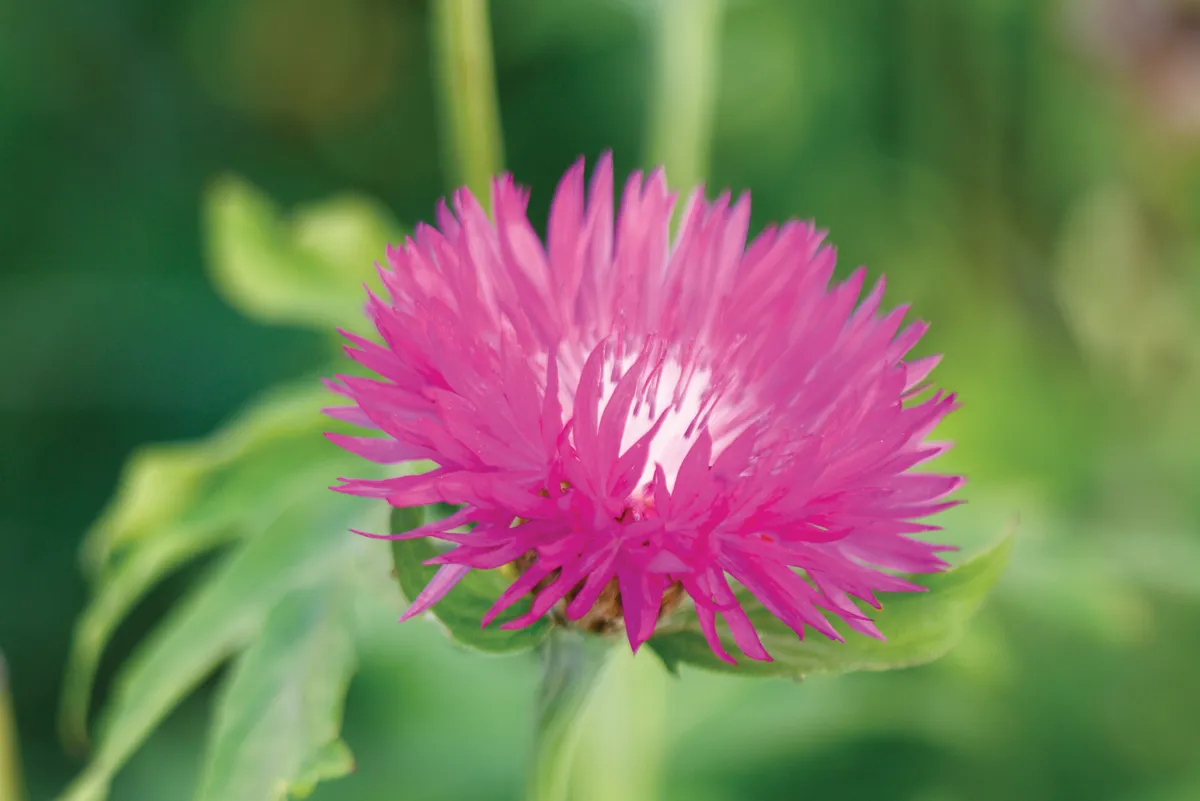
When to cut back centaurea
I cut plants back hard after flowering to ensure fresh stems and more flowers. I always leave some seedheads for the goldfinches otherwise they’d never forgive me.
How to propagate centaurea
Most varieties can be propagated by division, either after flowering or in the spring, although some with thick roots can a take a while to re-establish. Those growing from a single root stock, such as Centaurea orientalis, are best propagated by seed. And while all species can be propagated by seed, named varieties won’t necessarily come true and, as they are extremely promiscuous, hybrids will often occur.
How to care for centaurea
Make sure you don’t overfeed your plants. I find a yearly dressing of compost and a tiny amount of balanced fertiliser in spring is all that’s required.
What to plant centaurea with
Centaurea mix well with most other garden plants, if you take into account their propensity to spread and give them sufficient room. They look particularly good in a naturalistic planting with other meadow or prairie plants. We grow them in general herbaceous beds and borders planted in a cottage garden style alongside geums, Siberian iris and geraniums.
Problems with centaurea
Fresh leaves can be prone to slug damage in early spring. Good garden hygiene in winter, such as removing old leaves and tidying around the plants, can greatly reduce problems, but a few holed leaves is no cause for despair as centaureas grow fresh leaf rapidly.
The grey-leafed types can suffer from powdery mildew. Liming acid soils can reduce this but spraying with fungicide is rarely effective; by the time the problem is noticeable the leaves are usually old and the accompanying flush of flowers will be over. Instead it is better to cut back very hard – to the ground even – to remove any diseased leaves. Healthy foliage will soon grow and a new flush of flowers will be encouraged.
The leaves surrounding the flower buds of Centaurea macrocephala can sometimes be eaten by sawfly caterpillars. The best treatment is to turn a blind eye and simply ignore it as the flowers aren’t affected.
16 centaureas to grow
Centaurea montana
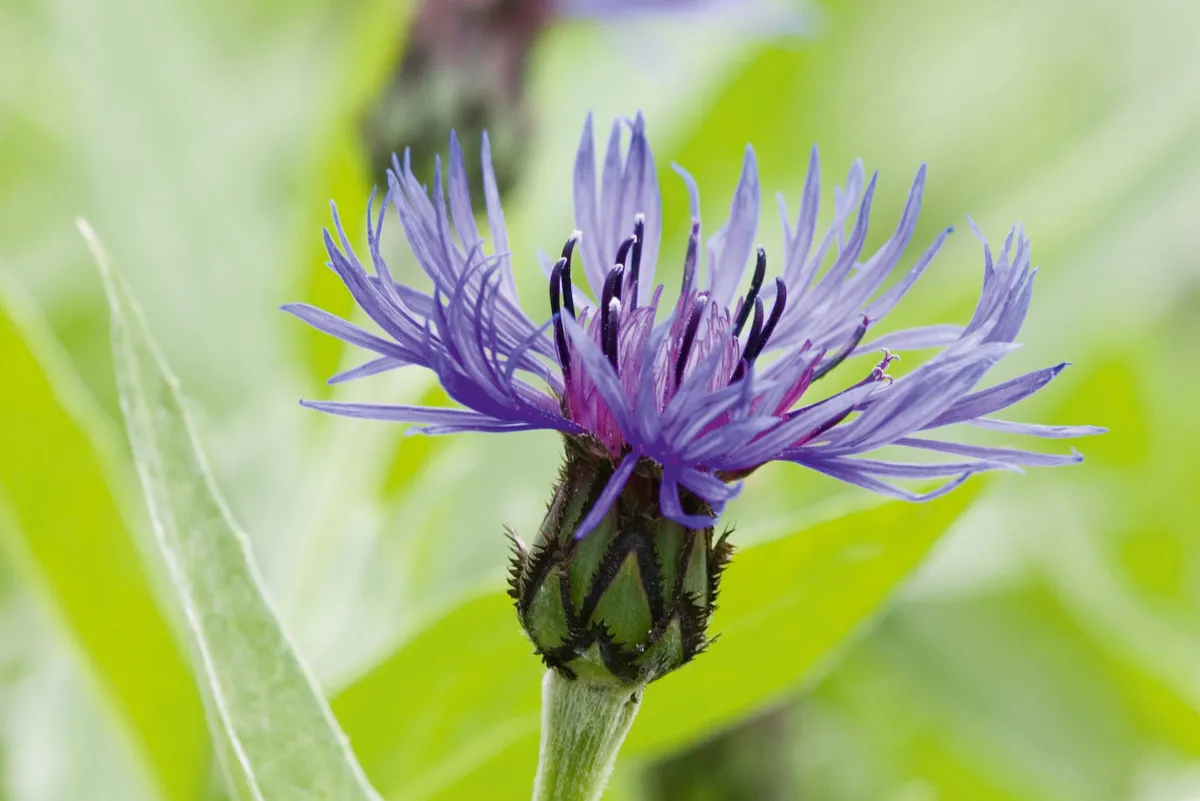
The mountain bluet is one of the most widely grown centaurea, with vivid blue flowers and silver-backed leaves. Its tendency to self-seed makes it loved and cursed by gardeners in equal measures. 50 cm.
Centaurea Montana ‘Grandiflora’
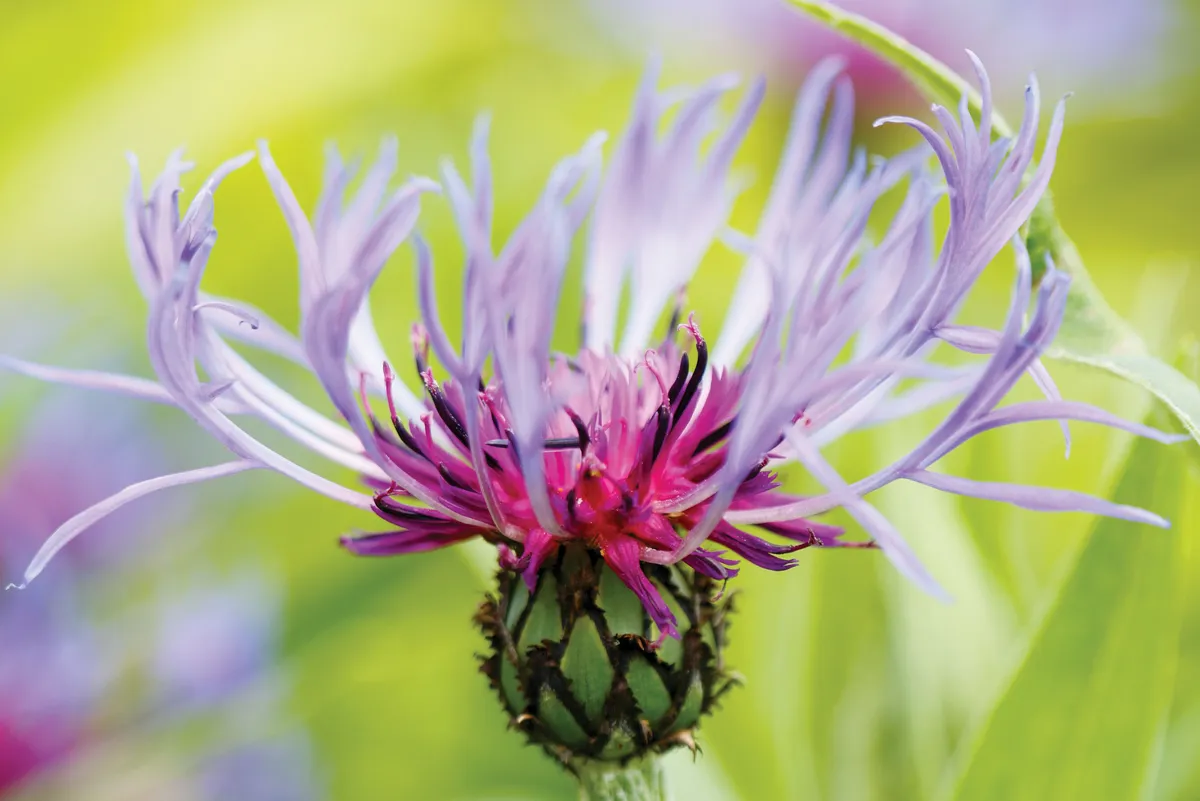
Taller and with larger, more impressive flowers than the wild species. Its blue flowers have a brilliant red-purple centre in the typical cornflower shape. The silver-backed leaves, jewel-like buds and seedheads extend the season of interest for several weeks either side of flowering. 90cm
Centaurea scabiosa

A tall, British native knapweed that has attractive, coppery buds and deep pink flowers. It was once used as an ointment to heal wounds. This species varies in height from 80-120cm.
Centaurea ‘Blewit’
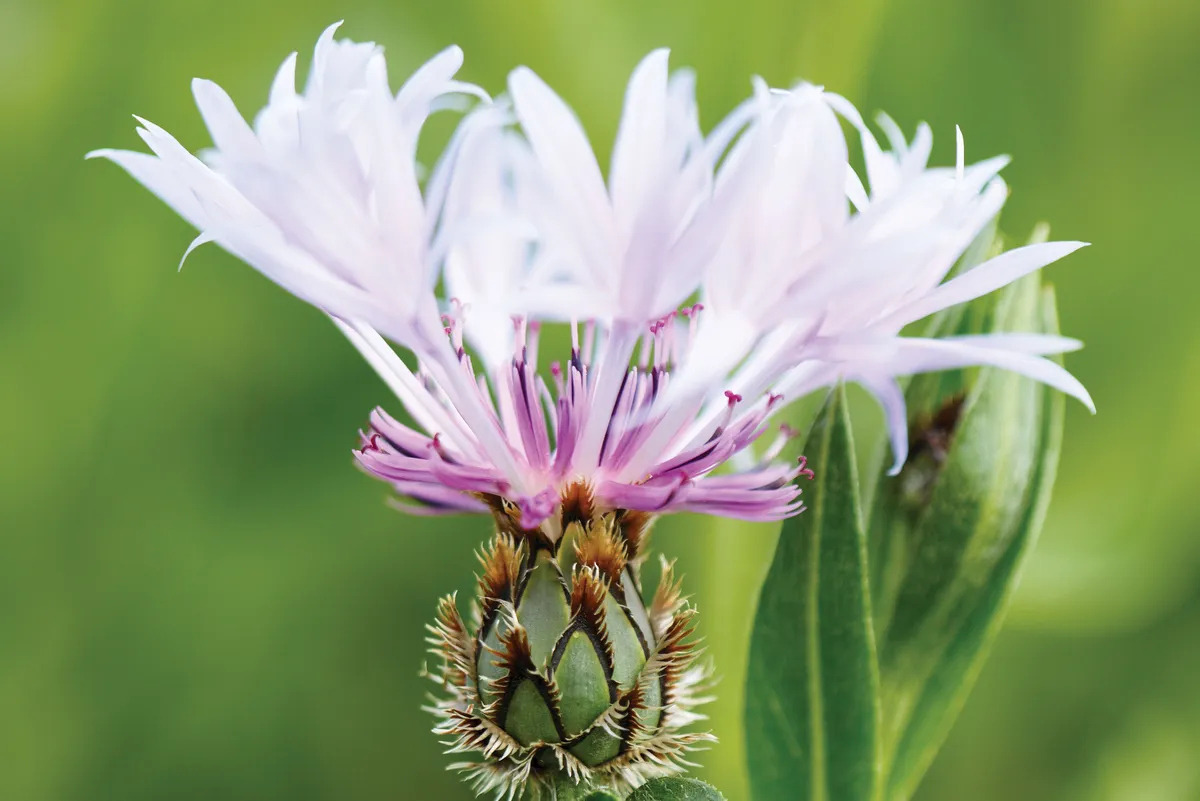
This new hybrid between Centaurea triumfettii and Centaurea montana was introduced by Joe Sharman of Monksilver Nursery. The sky-blue flowers are held on smallish stems above the silver-grey leaves. 20-30cm.
Centaurea montana ‘Purple Heart’
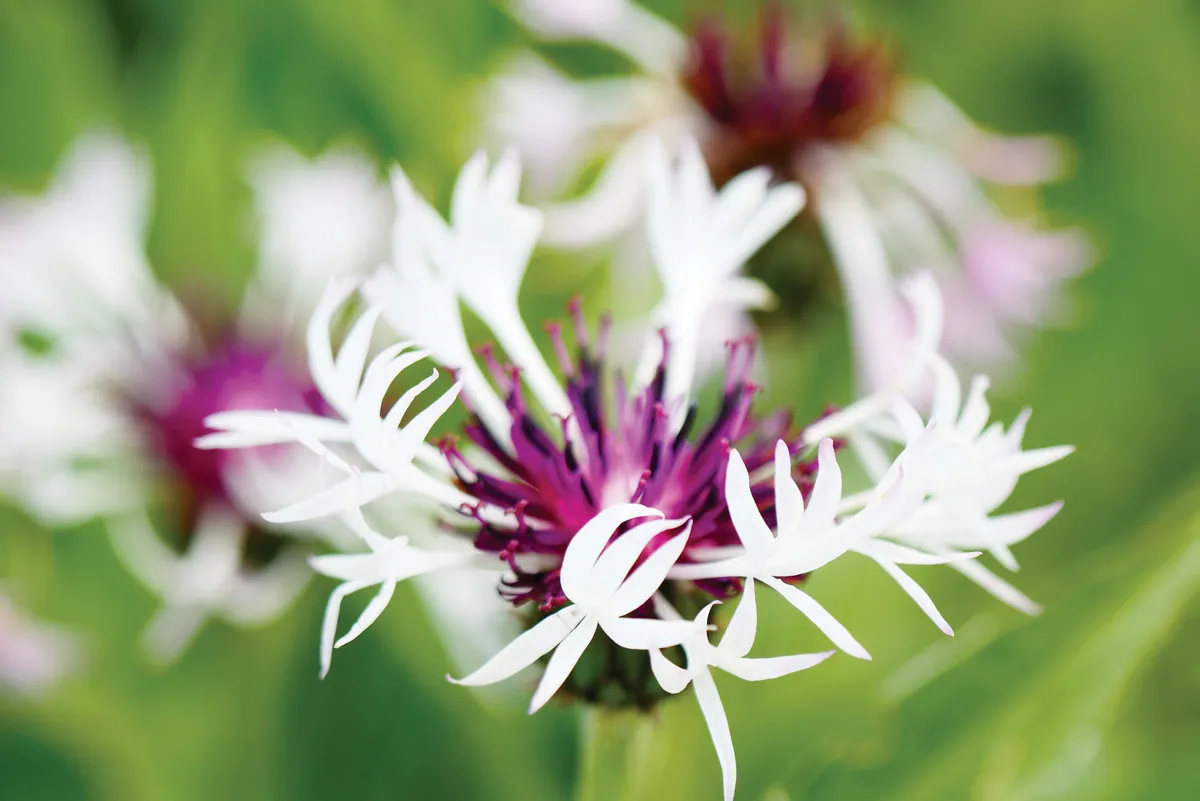
This unusual new cultivar has a striking white flower with an amethyst-coloured centre that last throughout the summer. There’s a very similar new cultivar called ‘Amethyst in Snow’, which may prove to be the same 45cm.
Centaurea ‘Jordy’
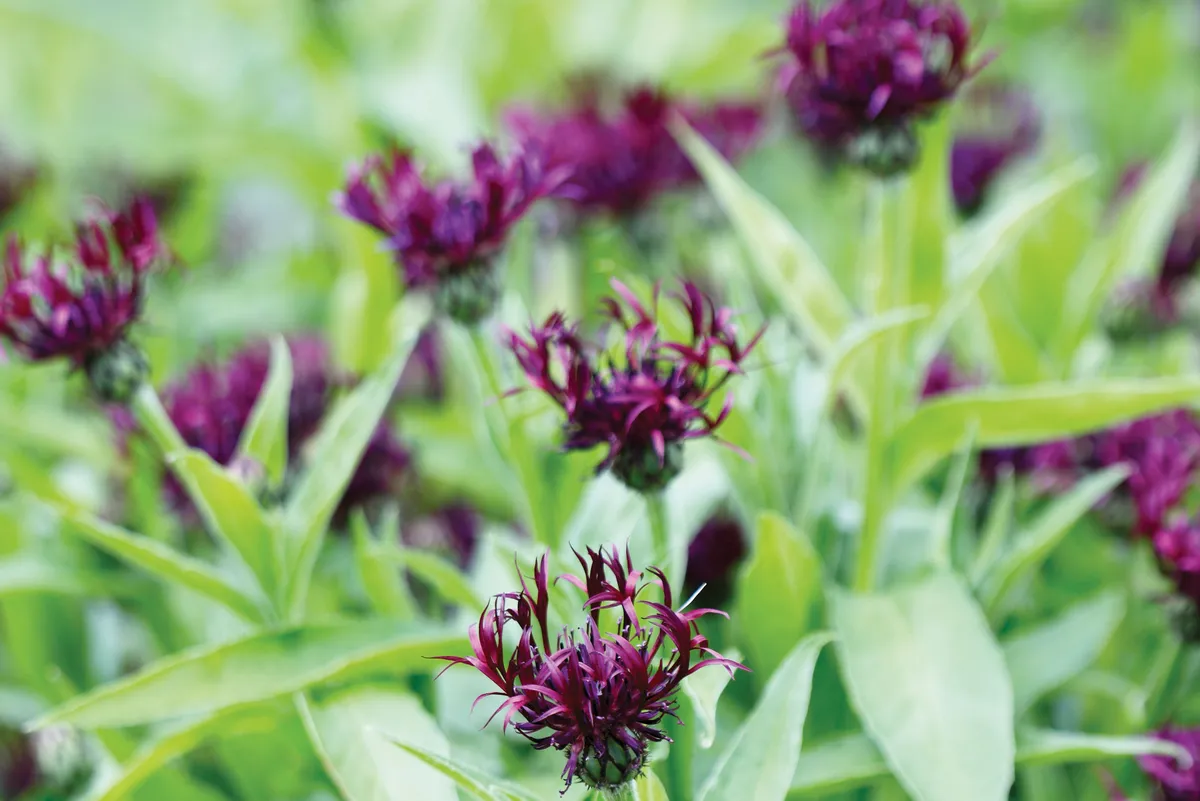
A stunning new hybrid of Centaurea montana x Centaurea jacea. Similar to Centaurea montana in appearance but more upright and less spreading. The jewel-like, deep-burgundy flowers on tall stems always attract attention. 60-75cm
Centaurea ‘Caramia’
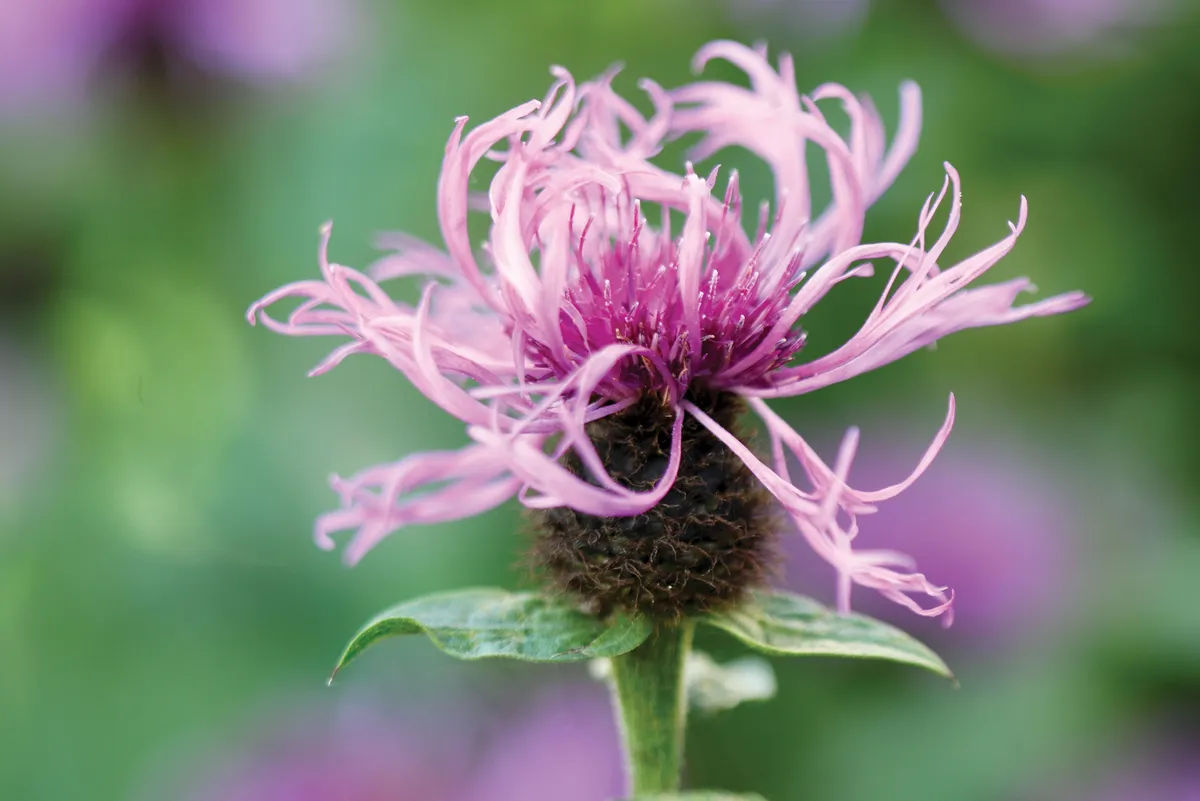
A new hybrid, valued as much for its interesting ball-shaped, black buds as for its fuchsia-pink flowers that flower from June to October. 45-60cm
Centaurea dealbata (pink form)
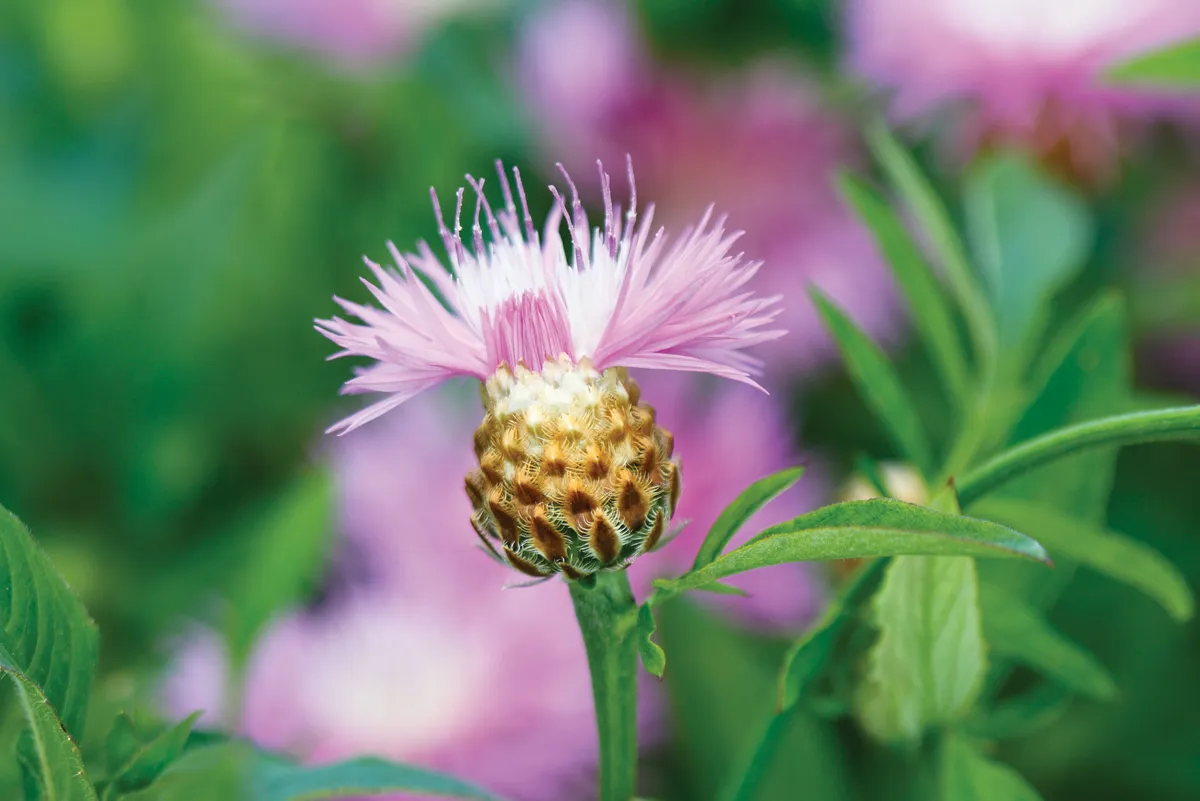
An imposing perennial knapweed with large, finely divided, silver-backed leaves and white-centred, pink flowers that open from bronze buds in early June. 75cm x 90cm
Centaurea dealbata ‘Steenbergii’

Impressive specimen plant that is remarkable for its vivid, magenta-pink flowers that last from June to August. It will form a large mound of leaves up to 80cm across. 60cm
Centaurea nigra ‘Elstead’
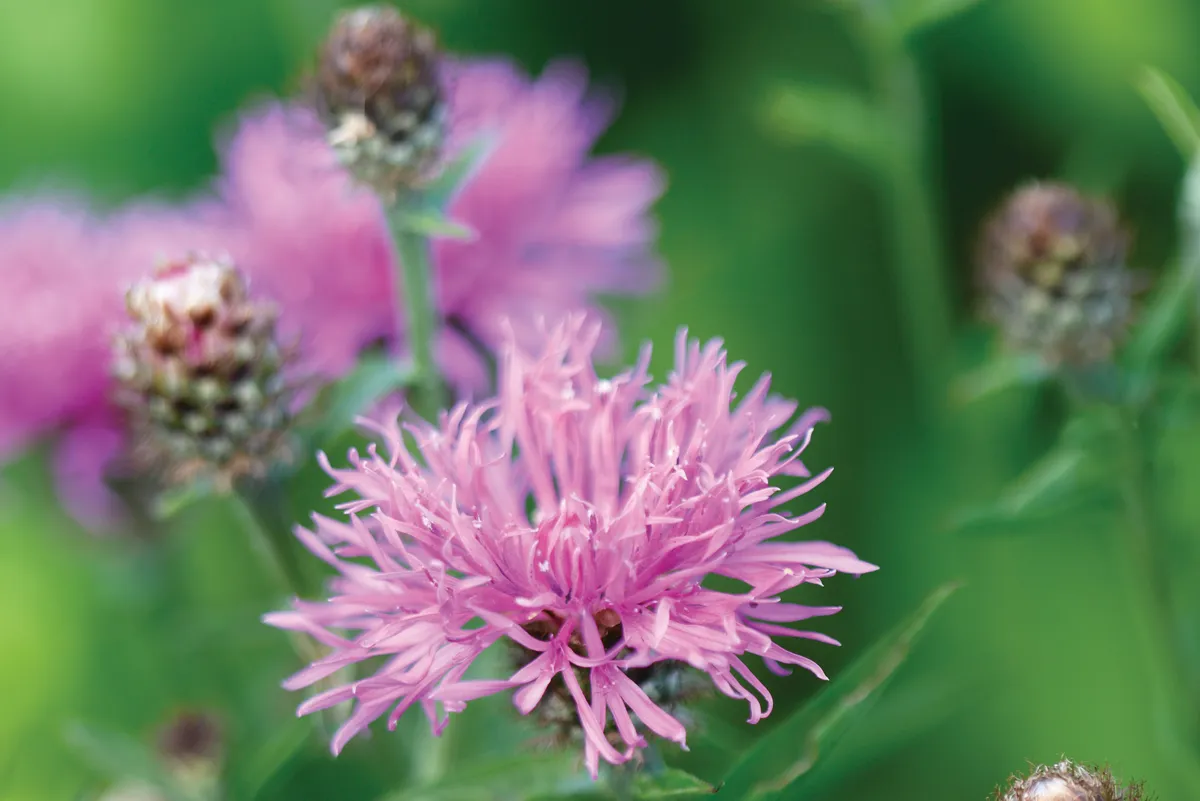
An unusual form of knapweed with longer ray florets creating a frilly effect. Blooms repeatedly throughout summer. It’s a magnet for bees and butterflies, and goldfinches love to gorge on the seedheads. 80-90cm
Centaurea bella
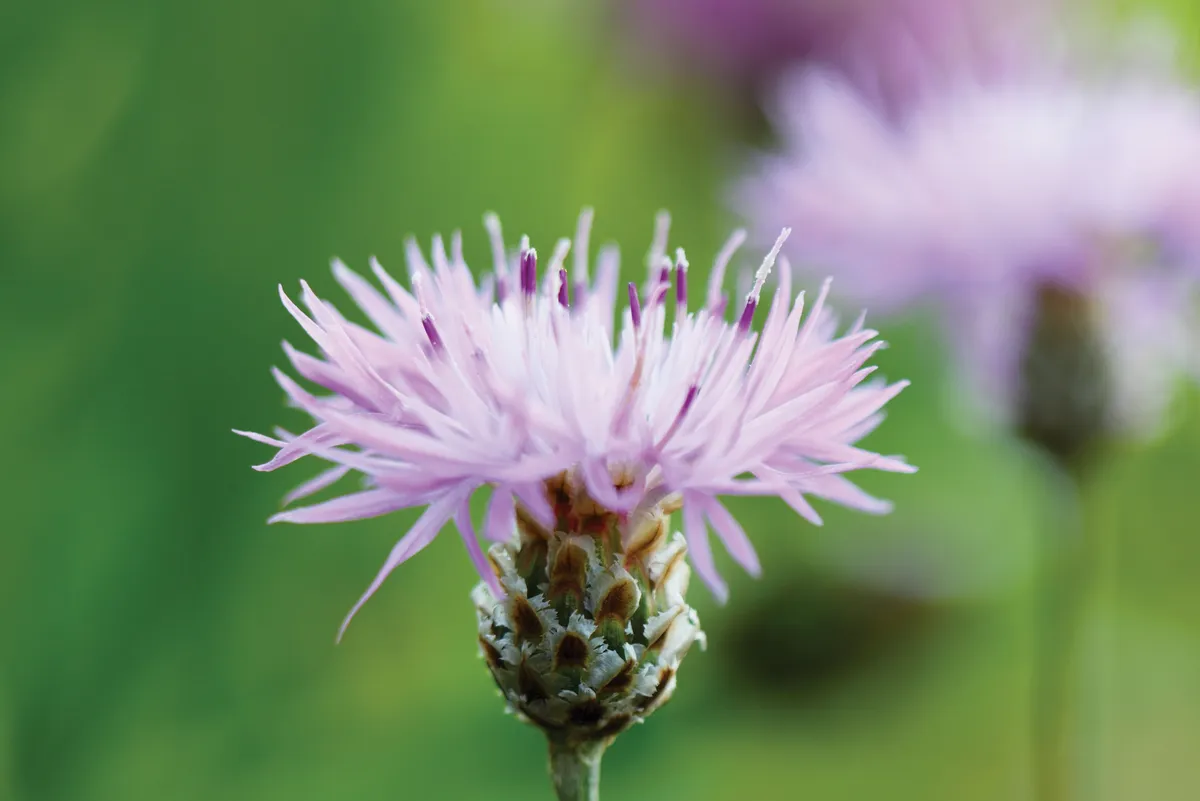
One of the smallest and most contained plants in the genus, it works well in rockeries or on the edge of borders. Its delicate, pink flowers, held above rosettes of silver leaves, last from June to August. 20cm
Centaurea cheiranthifolia
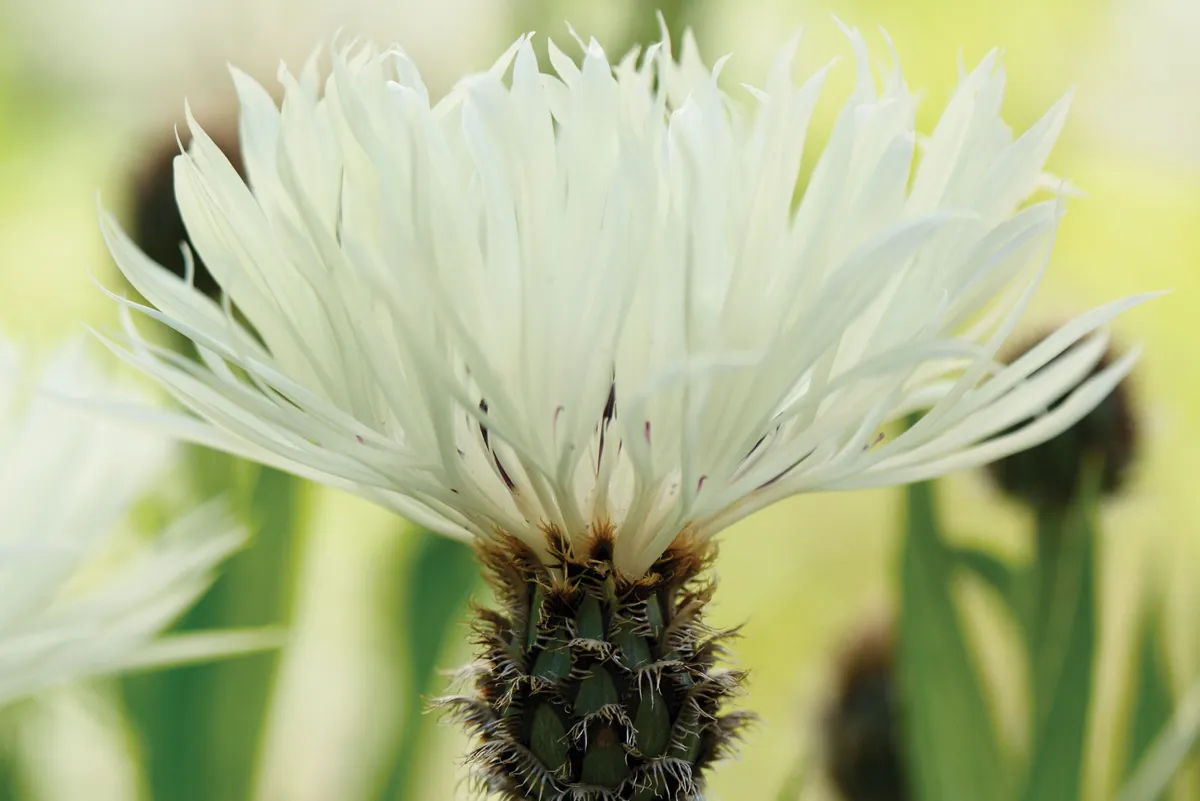
A much-admired species with unusually large, ivory-white flowers that appear in May and frequently remain in flower right through to July and often on into autumn. Soon forms a sizeable clump. 15-30cm
Centaurea glastifolia
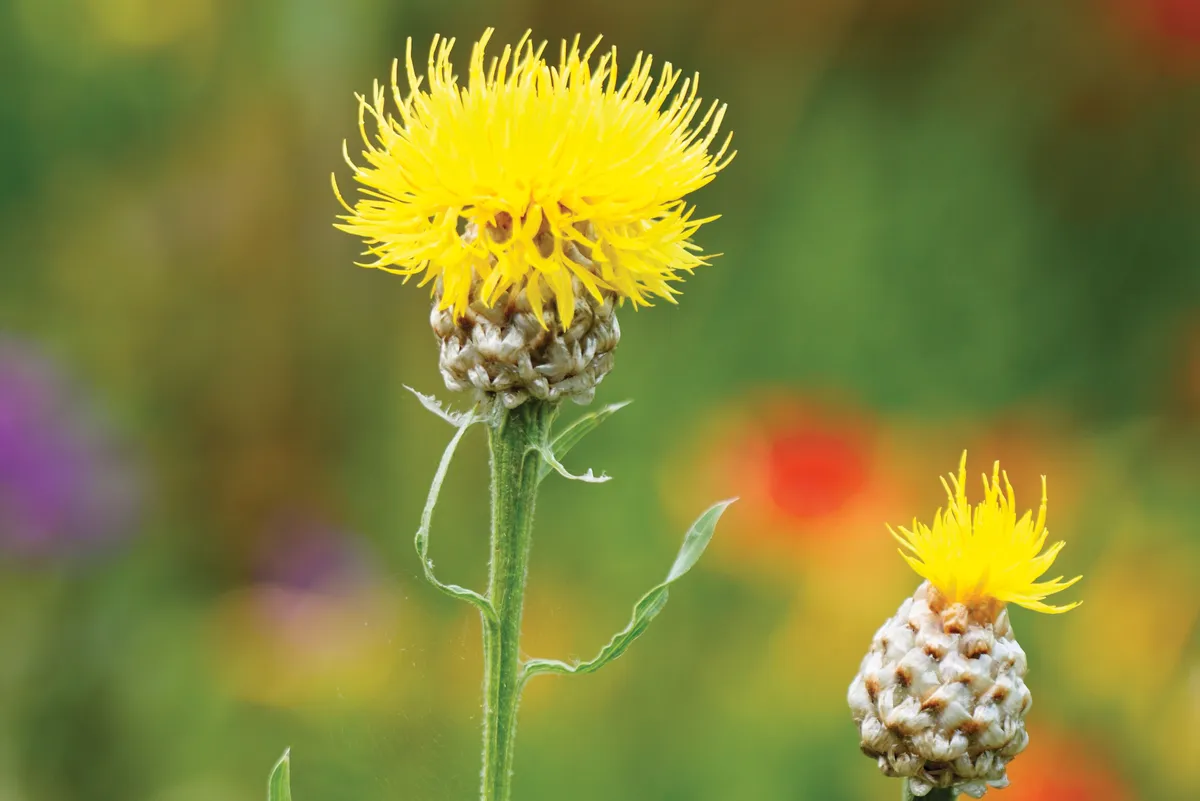
This useful plant has silver buds that many consider to be just as attractive as the small yellow thistle flowers that follow. It’s a tall, elegant sun lover that deserves to be more widely grown 1.2m
Centaurea orientalis

Pretty, delicate flowers on top of tall elegant stems and silver-grey leaves. An excellent choice for gardens that have free-draining soils as it re-blooms throughout the summer. Can grow to be very tall. 75-90cm
Centaurea ‘Totnes Fat Lemon’
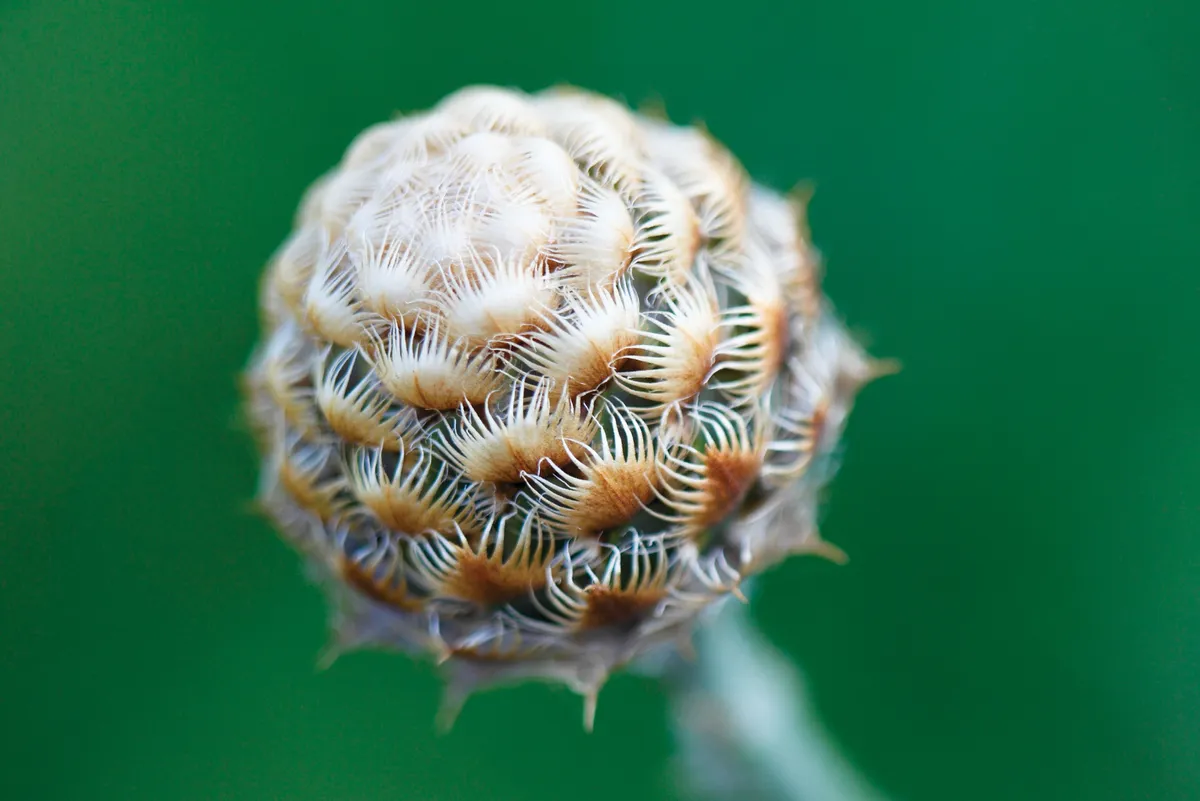
An exciting new hybrid with vibrant yellow flowers and attractive silvery bronze flower buds. It manages to out-flower all the other yellow-flowered types but is frustratingly difficult to propagate. 80cm
Centaurea montana ‘Ochroleuca’
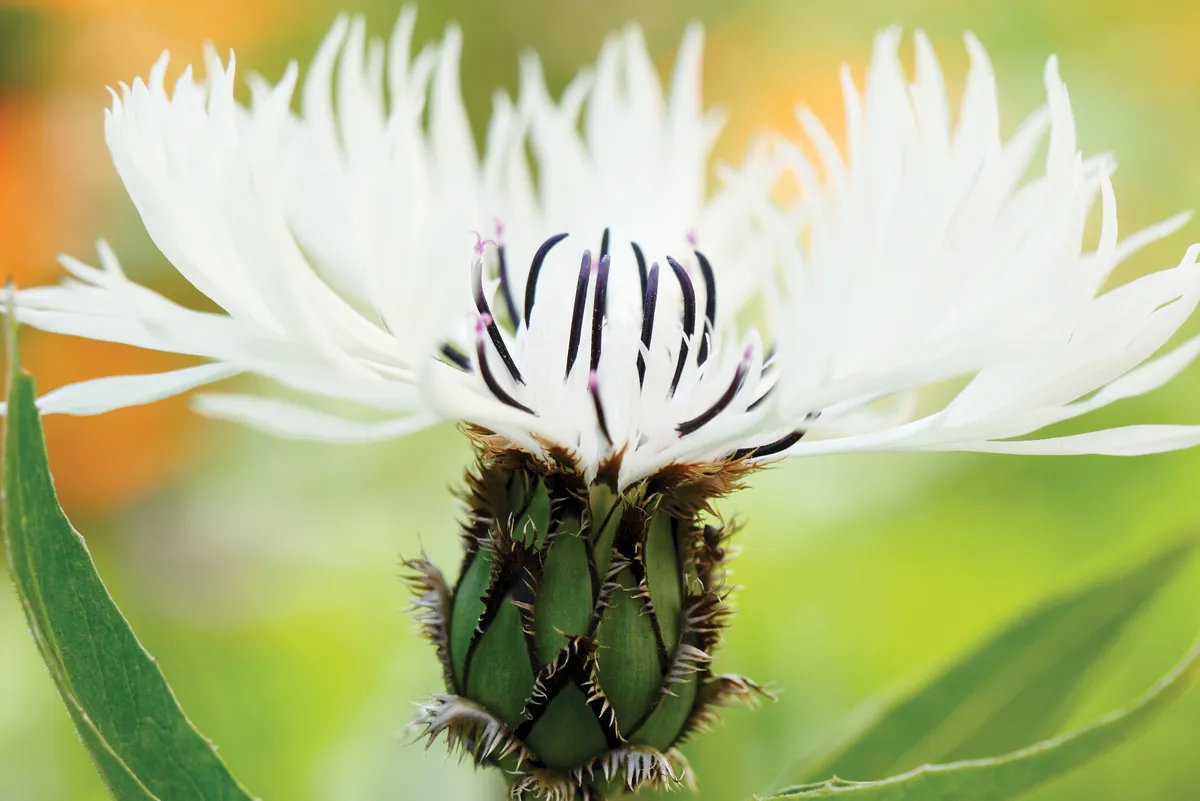
More compact and slower growing than the other montana cultivars. The large, ivory-white flowers, with contrasting black stamens, are held on short stems giving a neat, domed plant. 30cm
IN BRIEF
What Large and complex genus of more than 600 species of both annual and perennials.
Origins In the wild, centaureas are widely distributed across Europe and West Asia with a few native to America, although many have been introduced to different parts of the world. Centaurea nigra and Centaurea scabiosa are both native to the UK.
Season Varies. Most flower from May through to late autumn.
Size Ranging from around 20cm tall for some of the smaller cornflowers to more than a metre for the more spectacular knapweeds.
Conditions On the whole centaurea are happy in most soil types and will tolerate most positions except full shade.
Where to see and buy centaurea
Bide-A-Wee Cottage, Stanton, nr Netherwitton, Morpeth, Northumberland NE65 8PR. Tel 01670 772238, bideawee.co.uk
Cotswold Garden Flowers, Sands Lane, Badsey, Evesham, Worcestershire WR11 7EZ. Tel 01386 833849, cotswoldgardenflowers.co.uk




